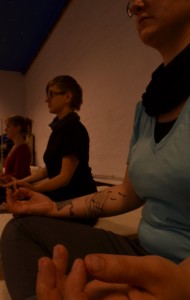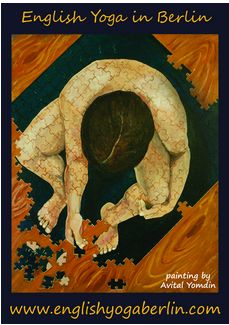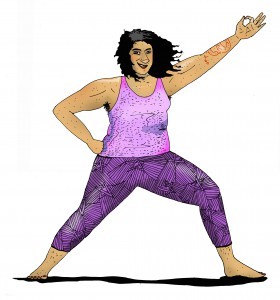
“Let the rain kiss you. Let the rain beat upon your head with silver liquid drops. Let the rain sing you a lullaby”. –Langston Hughes
No point mourning the end of Summer. There’s plenty to be happy for this Autumn.
Now that the hot days are winding down, we happily put away our swimming gear and bring-out our favourite scarfs. Whether you get ready for a new semester at school, new projects at work, or the city’s cultural season, we know you’re looking forward for the spectacle of colour and light that comes in the next months.
We at EYB are also looking forward to some exciting new classes and some popular continuing ones, to help you get more clarity, and energy for whatever you plan to do this Autumn.

Yoga Kreuzberg Studio
NEW SCHEDULE
Our Autumn Schedule offers you more opportunities to learn and develop your practice of yoga.
Now you can start the week with Hatha yoga –check-out Pinelopi‘s Monday class at 9:45. Our most popular style is also available on Tuesdays and Thursdays. That’s four Hatha Yoga classes each week.
Classical Yoga Tuesdays. This 105-minute class includes lots of pranayama, meditation and many of the methods of tantric kundalini yoga. Each week has a different focus, so check our page for details. Tuesdays at 8pm.
Pregnancy Yoga comes to EYB! Pinelopi draws from her vast experience as a teacher, yogi and mother to teach this class for expecting parents. Read more about this class. Every Monday at 11:45am.
Juli’s beloved Sunday class continues to bring gentle Vinyasa Flow to the people. Our Juli is committed to making yoga available to everyone, so a tight pocket is no longer an excuse for not reaping the benefits of yoga. Read more about Juli’s classes. Pay what you will. Sundays at 4pm.
Welcome to The Lab! Sundays bring a new experimental window to EYB. Every week we’ll have a different teacher/concept, exploring yoga, meditation, psychology, self-expression, and everything in between. Check our website for week by week details. Pay what you will. Sundays at 6pm.
OUR FAMOUS CLEANSING WORKSHOP IS BACK FOR THE ALLERGY SEASON
FOR OFFICE YOGIS
To welcome the many internationals arriving to Berlin this season, we are offering a 30% discount on all of our Office Yoga packages. Bring the magic of yoga to your workplace and enjoy less stress and more productivity.

Seeking Barter Yogis
GIVE US A HAND? OR TWO?
We need people for flyering, assisting between classes, child care, and more. Do you want to help out in exchange for yoga lessons? Drop us a line! Only responsible people need apply.
THE GIFT OF YOGA
We have gorgeous new gift cards for those of you who want to turn a friend or relative towards yoga. There’s never been a better time to give clarity and energy to someone you love.






 subtle life force
subtle life force








